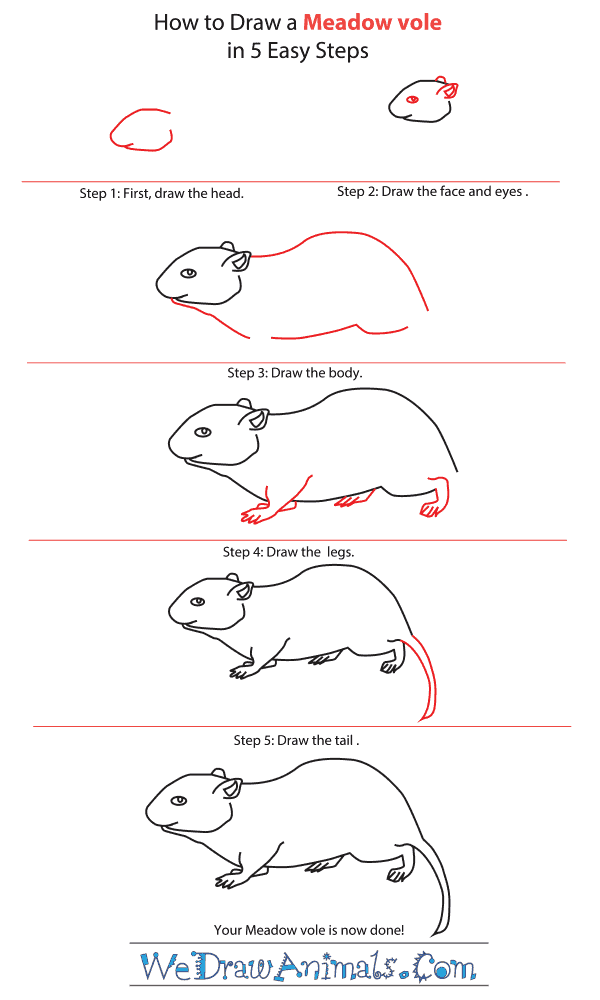In this quick tutorial you'll learn how to draw a Meadow Vole in 5 easy steps - great for kids and novice artists.
The images above represent how your finished drawing is going to look and the steps involved.
Below are the individual steps - you can click on each one for a High Resolution printable PDF version.
At the bottom you can read some interesting facts about the Meadow Vole.
Make sure you also check out any of the hundreds of drawing tutorials grouped by category.
How to Draw a Meadow Vole - Step-by-Step Tutorial
Step 1: First, we are going to draw the Meadow vole’s head. It has a round nose with a small mouth. Please leave space for the ears.
Step 2: The second step is to draw the ears and the eyes. The eye is a small oval and the ears are small with a small amount of curved skin.
Step 3: Next, we are going to draw the body. The body is round and back is higher than the neck but leave space for the tail and legs.
Step 4: The next step is to draw the legs that are short and low to the ground.
Step 5: The last step is to draw the tail. The tail is long and skinny.
Interesting Facts about the Meadow Vole
Meadow vole is commonly found in areas with wood and moisture in North America. Its upper body is dark brown in color while the lower parts are grey in color. It is 120-196 cm long and weigh 21-63kg. They feed on grass, sedge, plants and rarely insects, snails, fungi etc. Their primary predators include hawks, owls, carnivores and snakes. Hence, it plays a crucial role in the food chain. It also contributes towards providing nutrients for grass growth through its feces. Areas where deforestation or fire has taken place becomes the habitat for meadow vole.
Did you know?
- Meadow vole is also called meadow mouse or field mouse.
- It is a nocturnal animal that is active during nighttime.
- To stock up food supplies for winter season and to allow females to give birth, these mice excavate burrows underground.
- These are very violent by nature especially during the mating period.
- Due to the heavy population of meadow vole residing in the banks of Souris River in United States, it has been given another name called “mouse river”
- This is the most widely distributed species of Microtus genus in North America.
- During the process of mating, urine of the males acts as a stimulant for female reproduction.
Lesson plan note: Let children watch “Stuart Little”. It will help them understand that even animals have feelings and can be emotionally attached to humans. This will make them grow softer from the inside.






